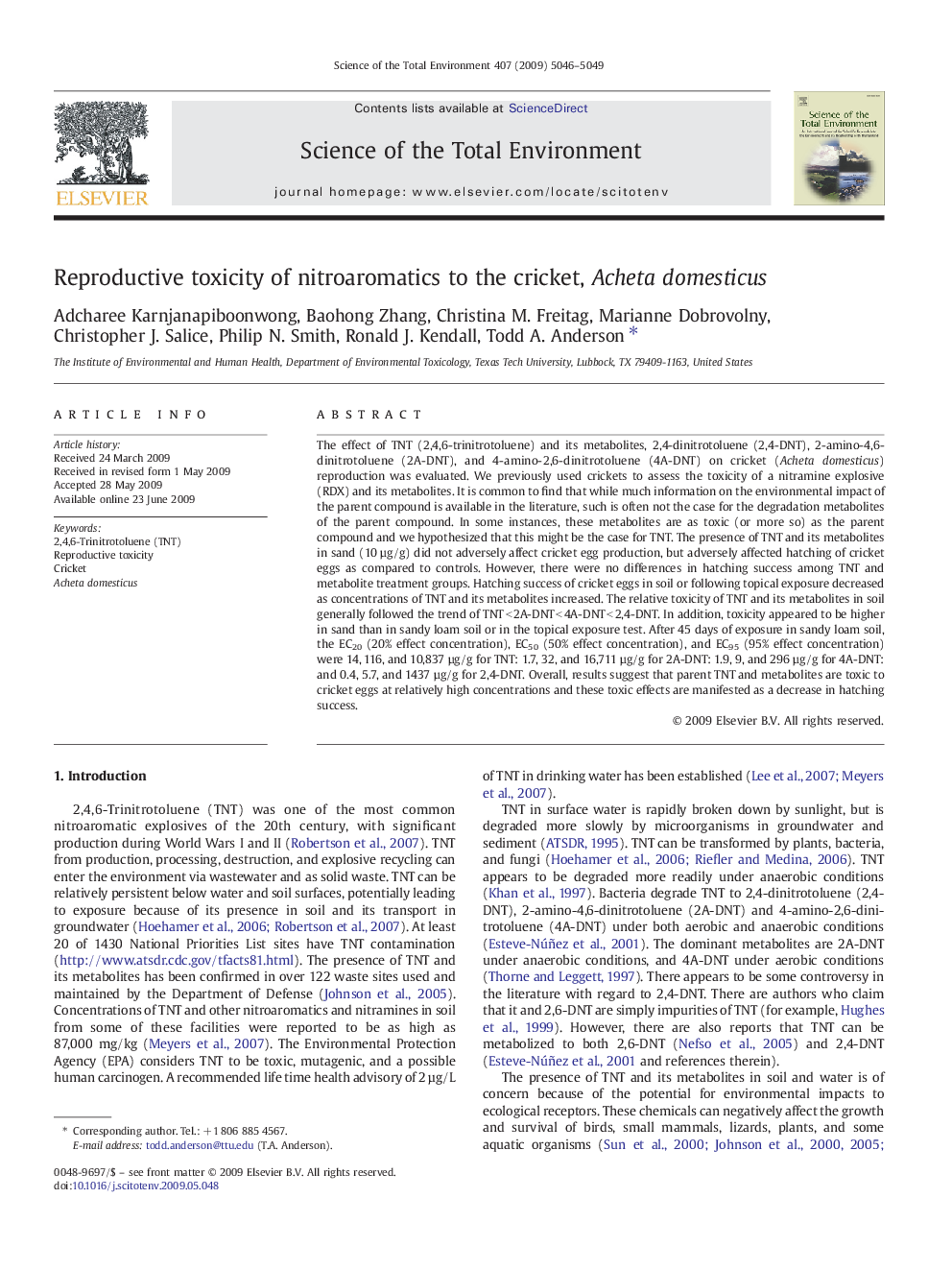| کد مقاله | کد نشریه | سال انتشار | مقاله انگلیسی | نسخه تمام متن |
|---|---|---|---|---|
| 4431583 | 1619892 | 2009 | 4 صفحه PDF | دانلود رایگان |

The effect of TNT (2,4,6-trinitrotoluene) and its metabolites, 2,4-dinitrotoluene (2,4-DNT), 2-amino-4,6-dinitrotoluene (2A-DNT), and 4-amino-2,6-dinitrotoluene (4A-DNT) on cricket (Acheta domesticus) reproduction was evaluated. We previously used crickets to assess the toxicity of a nitramine explosive (RDX) and its metabolites. It is common to find that while much information on the environmental impact of the parent compound is available in the literature, such is often not the case for the degradation metabolites of the parent compound. In some instances, these metabolites are as toxic (or more so) as the parent compound and we hypothesized that this might be the case for TNT. The presence of TNT and its metabolites in sand (10 µg/g) did not adversely affect cricket egg production, but adversely affected hatching of cricket eggs as compared to controls. However, there were no differences in hatching success among TNT and metabolite treatment groups. Hatching success of cricket eggs in soil or following topical exposure decreased as concentrations of TNT and its metabolites increased. The relative toxicity of TNT and its metabolites in soil generally followed the trend of TNT < 2A-DNT < 4A-DNT < 2,4-DNT. In addition, toxicity appeared to be higher in sand than in sandy loam soil or in the topical exposure test. After 45 days of exposure in sandy loam soil, the EC20 (20% effect concentration), EC50 (50% effect concentration), and EC95 (95% effect concentration) were 14, 116, and 10,837 µg/g for TNT: 1.7, 32, and 16,711 µg/g for 2A-DNT: 1.9, 9, and 296 µg/g for 4A-DNT: and 0.4, 5.7, and 1437 µg/g for 2,4-DNT. Overall, results suggest that parent TNT and metabolites are toxic to cricket eggs at relatively high concentrations and these toxic effects are manifested as a decrease in hatching success.
Journal: Science of The Total Environment - Volume 407, Issue 18, 1 September 2009, Pages 5046–5049